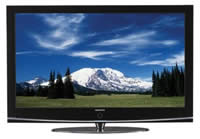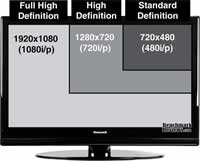Difference between HDTV and Plasma
Key Difference: Plasmas are a type of flat panel display that is made up of noble gases filled between two glass panels and are electrically charged in order to produce light and create images. (High-definition) HDTV is a broadcasting format that is higher in resolution than standard-definition and analog signals.
Plasmas are a type of flat panel display that is made up of noble gases filled between two glass panels, which are electrically charged in order to produce light and create images. (High-definition) HDTV is a broadcasting format that is higher in resolution than standard-definition and analog signals. Plasma TVs are available with and without HDTV compatibility. Plasmas are more common in displays greater than 40 inches. HDTV format is also available in LCDs, LEDs, and CRTs.

A plasma panel display has tiny cells of noble gases (neon and xenon) and a small amount of mercury in compartmentalized spaces between two glass panels. The panels also have two electrodes between the glass panels, an address electrode and the display electrodes. The display electrodes are surrounded by an insulating dielectric material and covered by a magnesium oxide protective layer. In order to create the pixels, the address electrode and the display electrodes are charged, which then releases an electric current that flows through the cell. The charge stimulates the gas atoms in the cells to release ultraviolet photons. The photons interact with the phosphor material on the cell walls and give off light, creating a visible light photon. Each pixel has three subpixels, one coated with red, one with blue and one with green. By manipulating the intensity of the current, the system can produce hundreds of different combinations of the three colors and create an image on the screen.

On the other hand, HDTV is a broadcasting format that is an upgrade compared to the standard digital television. HDTVs are able to accept higher resolution and provide a better image quality compared to standard TVs. Prior to broadcasting being done in high definition or digital format, broadcasting was done in analog, where signals were transmitted through the air, cable or via satellite. This was succeeded by digital signaling as it provided better resolution, better quality, video could be progressive instead of interlaced (image is shown in lines of pixels), stations could multicast and digital TVs can support HDTV broadcasts. Digital signals were transmitted in form of ones and zeros compared to analog signals which were transmitted in form of waves.
HDTVs provide a better aspect ratio, better resolution and better frame rate, when compared with DTVs. However, in order for a consumer to receive high-definition format, they need to have a TV with HD compatibility, a station that broadcasts HDTV format, an antenna, cable or satellite service, and an HDTV set. HDTV sets are available that are already integrated with a digital tuner to receive HDTV, or a consumer can also go with a HDTV-ready set that does not come with a tuner but is HDTV compatible. HDTVs work with LCD screens, plasmas, LEDs, etc. HDTV works best with Plasma when using on large size screens.
Image Courtesy: rodsbot.com, benchmarkreviews.com









Add new comment